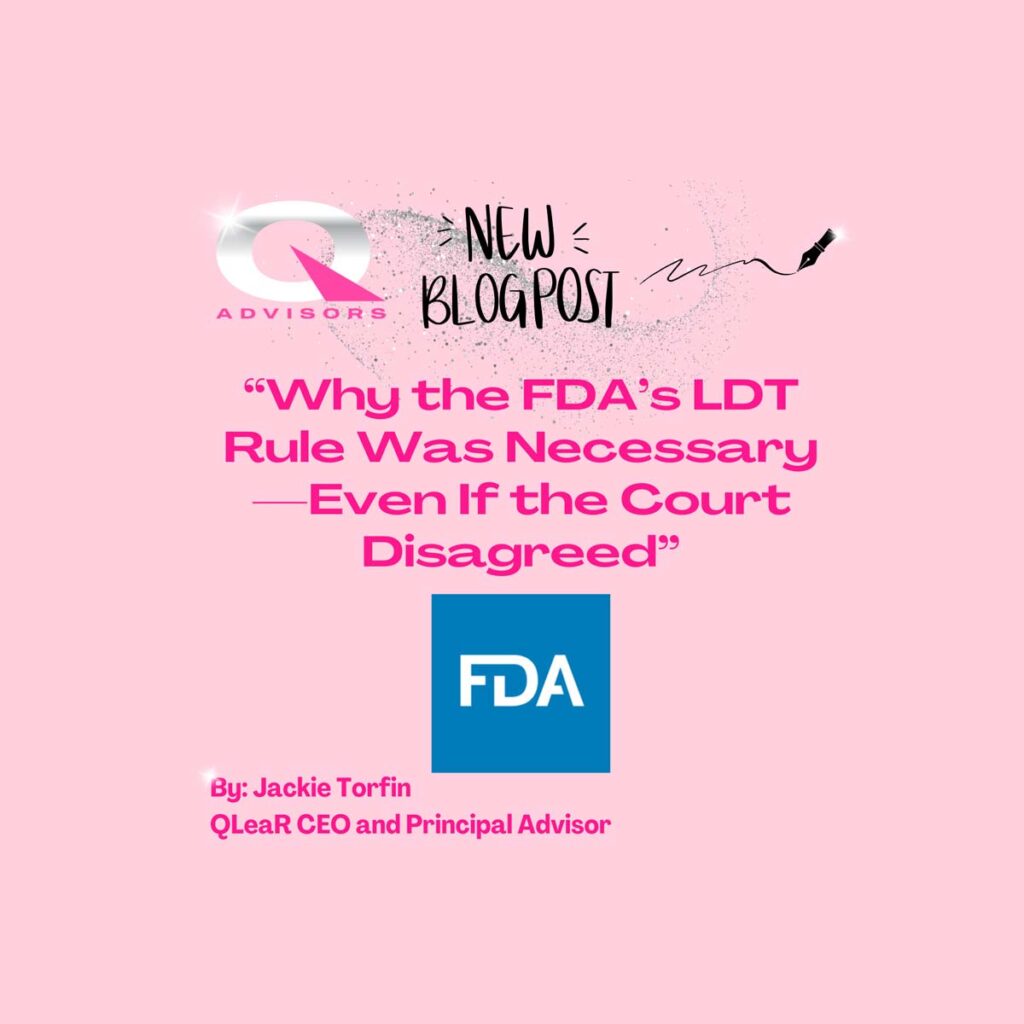An Unpopular Opinion
The recent court decision in American Clinical Laboratory Association (ACLA) v. FDA struck down the FDA’s rule regulating laboratory-developed tests (LDTs), ruling the agency lacked statutory authority. While the court was legally correct, the decision leaves a dangerous gap in oversight. The truth is: CLIA alone isn’t enough to ensure the safety and efficacy of modern diagnostics.
CLIA Regulates Labs, Not Tests
The Clinical Laboratory Improvement Amendments (CLIA) were designed in 1988 to ensure lab accuracy—not to evaluate the safety of tests themselves. CLIA governs:
✅ Lab operations (personnel qualifications, quality control)
✅ Proficiency testing (ensuring labs run tests correctly)
But CLIA does not regulate:
❌ Test development (how reagents, instruments, or software are designed)
❌ Commercial distribution (whether a defective component gets sold to hundreds of labs)
This means a lab can use an unverified reagent or algorithm—as long as it follows CLIA protocols.
Two Case Studies: When LDTs Succeed and When They Risk Harm
1. Mayo Clinic’s AL Amyloidosis Test (A CLIA Success Story)
My mother was diagnosed with AL amyloidosis using Mayo’s mass spectrometry test—a gold standard that detects misfolded proteins missed by traditional methods. This test uses unmodified, laboratory instruments commonly used in FDA methods (e.g., Thermo Scientific LC-MS/MS) and standardized reagents. CLIA works here because the underlying technology is well-established.
2. The Karius Test (Where CLIA Isn’t Enough)
Karius detects 1,000+ pathogens from a single blood sample using proprietary machine learning and some custom reagents. While innovative, its complexity means:
– It relies on in-house controls and algorithms not independently validated.
– If the test’s design is flawed, CLIA only catches errors after patients are affected.
This is why FDA oversight matters.
The FDA’s Role: Preventing Harm Before It Happens
Unlike CLIA’s reactive inspections, the FDA:
✅ Reviews tests premarket (via 510(k) or PMA pathways)
✅ Ensures manufacturing quality (21 CFR Part 820)
✅ Monitors post-market safety (recalls, adverse event reporting)
Without this, a faulty test could spread to hundreds of labs before CLIA detects a problem.
The Court Was Right—But Congress Must Act
The ACLA v. FDA ruling was legally sound: The FDA can’t regulate LDTs under current law. But the court also acknowledged CLIA wasn’t meant to oversee test design or manufacturing.
The solution? Congress should pass a tailored version of the VALID Act, creating a risk-based framework where:
– Low-risk LDTs (like Mayo’s test) stay under CLIA.
– High-risk LDTs (like Karius’) undergo FDA review.
Conclusion: Safety and Innovation Aren’t Opposing Goals
The FDA’s LDT rule wasn’t about stifling innovation—it was about preventing another Theranos. Until Congress acts, we’re relying on a system that only catches problems after patients are harmed.
We can—and must—do better.

